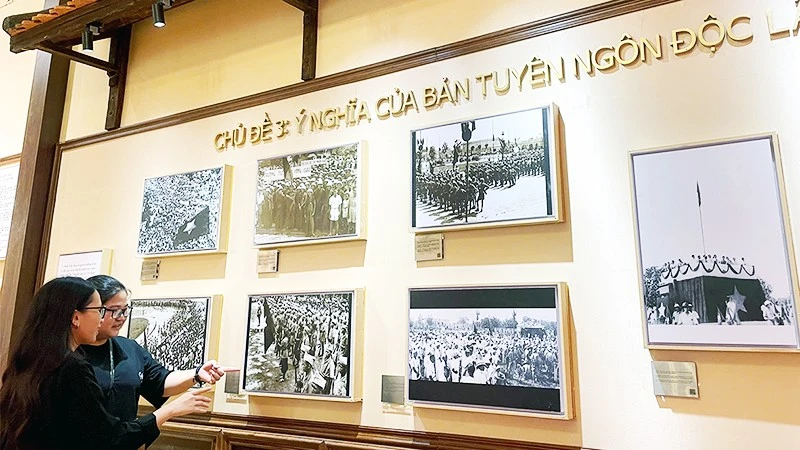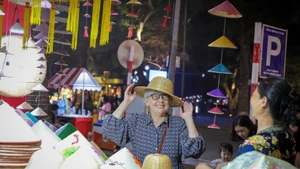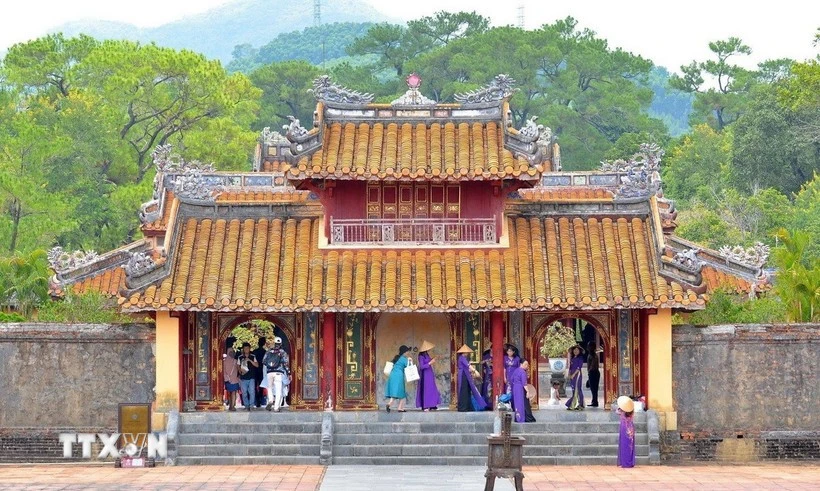Integrating historical memory, historical figures, and modern technology
The space in this historic house, artefacts and stories preserved here, cary the imprint of a pivotal moment in history, tied to the sacred memories of the August Revolution. This was President Ho Chi Minh’s first residence upon his return to Ha Noi from Tan Trao. Here, together with the Party Central Committee, he made many crucial decisions on domestic and foreign policy, on the activities of the Provisional Government, and on the organisation of the Independence Ceremony.
In a small upstairs room, President Ho Chi Minh drafted the “Declaration of Independence” that gave birth to the Democratic Republic of Viet Nam. On April 29, 1979, the Ministry of Culture and Information designated the House at 48 Hang Ngang Street as a national historic site. On the occasion of the 80th anniversary of the founding of the Democratic Republic of Viet Nam, the site has been renovated and its displays upgraded to present the context in which the “Declaration of Independence” was written, along with President Ho Chi Minh’s personal mementoes.
More importantly, the exhibition has embraced cutting-edge technology to transform the site into a vibrant cultural attraction, linked with other memorial sites to President Ho Chi Minh across Ha Noi. It meets the public’s growing demand for visits, research, and engagement with the history of the revolution. The exhibition employs the latest innovations in digital technology, 3D imaging, multimedia projection, and interactive displays. Artefacts are carefully selected and presented in a modern, engaging style that enhances interaction and impact. On the second floor – President Ho Chi Minh’s workspace and living quarters - hologram technology brings to life the image of President Ho Chi Minh drafting the “Declaration of Independence”, while 3D mapping recreates the historic moment he read it aloud at Ba Dinh Square. Artefacts associated with the President have been digitised and equipped with QR codes, enabling visitors to access detailed information and discover the stories behind each item. On the rooftop, a virtual reality installation allows visitors to experience the view of Ha Noi’s Old Quarter as it was in 1945, from the vantage point of this heritage house.
Honourable yet challenging experience
Truong Thi Thuyet, a young member of the exhibition team, shared that employing 3D technology in the display was both an honour and a formidable challenge. Each model and recreated image is not merely a technical product but also a “bridge” between historical memory and public emotion. For engineers passionate about history, the greatest satisfaction lies in transporting viewers back to the nation’s heroic moments - not through books or faded archival footage, but in a vivid, immersive environment rich in emotional depth.
Every detail, from line, light to texture, was carefully designed to evoke pride and connection. Technology has amplified the significance of historic events and figures by ensuring data is accurate and complete. AI helps fill in the missing pieces, reconstructing settings eroded by time, addressing gaps in documentation, creating new perspectives, or rebuilding scenes from scattered photographs. A single high-resolution scan of an original photograph, with annotations and cross-references, can serve as a foundation for AI to recreate a character or event with remarkable accuracy.
Architect Dinh Viet Phuong, with extensive experience in digitisation and 3D imaging, noted: with President Ho Chi Minh’s image, 3D and AI technologies can reconstruct not only his face and appearance but also his spirit, mannerisms, gaze, smile, and voice - so that future generations may feel the charisma of a real person, not just a familiar statue or photograph. This requires a fusion of artistic creativity, rigorous historical research, and the power of reconstruction algorithms. When meticulous scholarship meets advanced technology, AI becomes a powerful tool for preserving historical memory, inspiring and educating future generations. In exhibitions, this is a compelling way to render history more authentic and alive in the eyes of the public.
Dr Nguyen Doan Van, Director of the Ha Noi Monuments and Scenic Sites Management Board, said: “The house at No. 48 Hang Ngang is the first site where we have integrated new technologies into our displays. Following this, Ha Noi will expand the model to showcase and promote the value of the capital’s revolutionary heritage - such as at the site in Van Phuc village (Ha Dong), where President Ho Chi Minh wrote his Appeal for National Resistance, or at 90 Tho Nhuom Street, where comrade Tran Phu drafted the Party’s Political Thesis.”
















